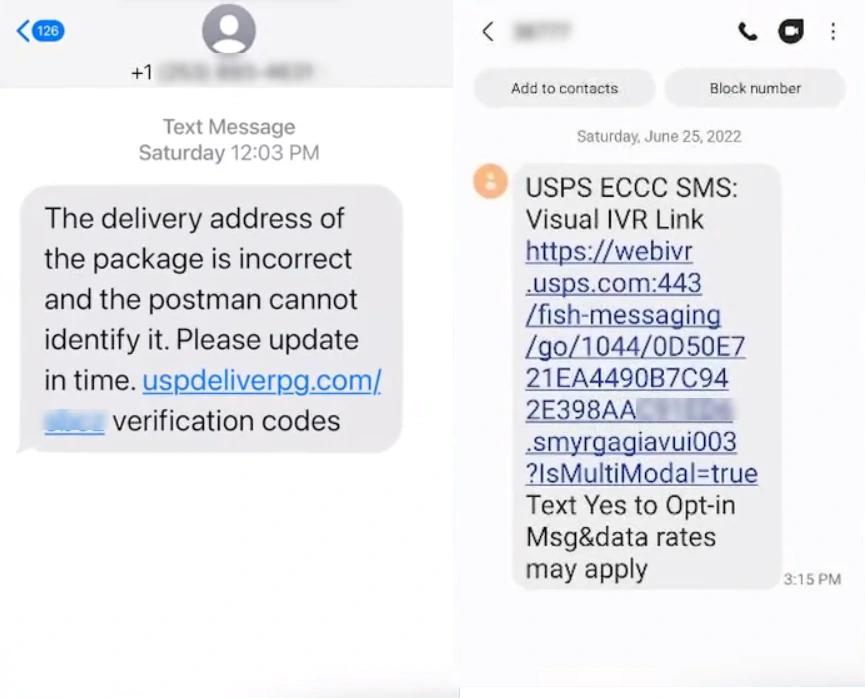As the main shopping event of the year approaches, Black Friday shopping scams have into view. Con actors from all over the world try to create the most convincing fraud, trying to make a fortune. Let’s see the most common Black Friday scams, and the way to avoid them.
How Do Scams Work?
Fraudsters use various methods to trick people into giving away their sensitive information or financial details, or straightly spending money for non-existent items. They create fake websites or online stores that look like legitimate businesses, use stolen logos, product descriptions, and images. All this is needed to make victims believe they’re dealing with a genuine website.

To attract people to their scam pages, frauds commonly opt for ads on social media and email spam messages. The former usually promises some unbelievable discounts for all who enter the promo code from the ad; so do the emails, with a difference of being more personalized. The latter is achieved through copying the style of genuine shops, which may once again convince the user about the legitimate status.
Common “Black Friday” Scams
Unfortunately, shopping is also a playground for scammers looking to spoil the fun. Let’s take a look at some scams you might encounter during this shopping festival:
Fake Websites
Imagine you’re excitedly browsing for Black Friday deals, and you come across what seems like an amazing offer. The catch? The website you land on looks exactly like the real deal, but it’s actually a cleverly crafted fake. These cyber tricksters put in serious effort to make these sites look legit. The logos, the layout – everything screams authenticity. They offer jaw-dropping discounts that make you think you’ve hit the jackpot. However, behind the scenes, there’s a dark agenda. When you decide to make a purchase on these fake sites, you’re not just getting a knockoff product. You’re also handing over your personal info – things like your account details. It’s like stepping into a digital trap.
We found examples of phishing sites that contain similar registered information and look similar to each other:

- www.dollsaleshop.com
- www.oyepackaging.com
- www.onlinepills.su
- www.cluwex.com
Payment Scams
When working with victims through legitimate pages, con artists often try to avoid any possible refunds and responsibilities. This may be done by convincing you to pay outside of an official website payment system. Rascals offer discounts or incentives if you pay via PayPal, Venmo, CashApp or even in crypto. However, paying that way makes them free to cheat on your item. The buyer protection mechanism does not cover the deals where payments were done through a third-party system. Sure enough, you can report them to the support team, but they will likely scam another dozen people before their account will be deleted.
Delivery and Shipping Scams
And now, finally, you’re eagerly waiting for your Black Friday purchases, and suddenly you find out that scammers are playing dirty tricks in the delivery and shipping game.
Scammers often use the deceptive tactic of sending fake delivery notifications that appear to be from popular delivery services such as FedEx, UPS, or the U.S. Postal Service (USPS). These scams are typically sent via text messages and contain a link to a fake website that claims to resolve a shipping issue. In reality, the website tricks the user into providing personal information or paying a fake fee or tax.

Another example that’s been causing headaches is a campaign using something called AgentTesla malware. They send you emails, talking about orders and shipments with subjects like “shipping documents.gz.” Then in those attachments are nasty surprises that can mess with your system.
In October 2023, researchers discovered a 13% spike in sneaky files linked to orders and delivery compared to the previous year. It’s like these cyber adversaries are stepping up their game, making it crucial for us to be extra cautious and beef up our online defenses.
How To Identify The Scam
- Thoroughly check emails for grammatical errors, unclear terminology, or signs of machine translation to ensure accuracy. Phishers often use domains that have minor spelling errors or appear to be legitimate.
- Never trust offers that are too good to be true. Most of the time, they are not, and all these offers aim is to make you pay for a non-existent item or one of subpar quality.
- When assessing a message for scam potential, look out for a sense of urgency or desperation, as well as depersonalized appeals (using “Dear user” instead of your username).
- Be careful when opening unexpected emails. It’s suspicious to receive discounts for items you’ve never shown interest in from sites you’ve never been to. Verify information through legitimate websites, and try to find more info regarding the offer from that particular site.
- Beware of URL phishing attacks that trick you into clicking on a malicious link. To protect yourself, hover over links in emails to verify their destination. Avoid clicking on links. Instead, go directly to the company’s website and navigate to the relevant page.
How To Prevent “Black Friday” Scams
To ensure a secure and enjoyable shopping experience, consider the following preventive measures. If someone claims to be a representative of a brand and you’re uncertain, take the extra step to call the company directly and verify their identity. Always scrutinize the sender’s email address; legitimate brand communications typically come from official domains, not suspicious webmail addresses. Opt for well-known online retailers with a proven track record of trustworthiness. Ensure the website address begins with “https://” for a secure connection, and be cautious of sites with misspellings or unusual domain names. Resist the temptation to click on links in unsolicited emails or pop-up ads. Instead, manually type the retailer’s official URL into your browser to access their site directly. When dealing with delivery-related emails, verify tracking information on the retailer’s official website. Avoid clicking on links or downloading attachments from the email itself.
Keep yourself informed about the latest scam tactics; awareness serves as a robust defense against cyber threats. Share this knowledge with friends and family to collectively enhance awareness and vigilance. It’s a community effort in staying one step ahead of potential scams.




